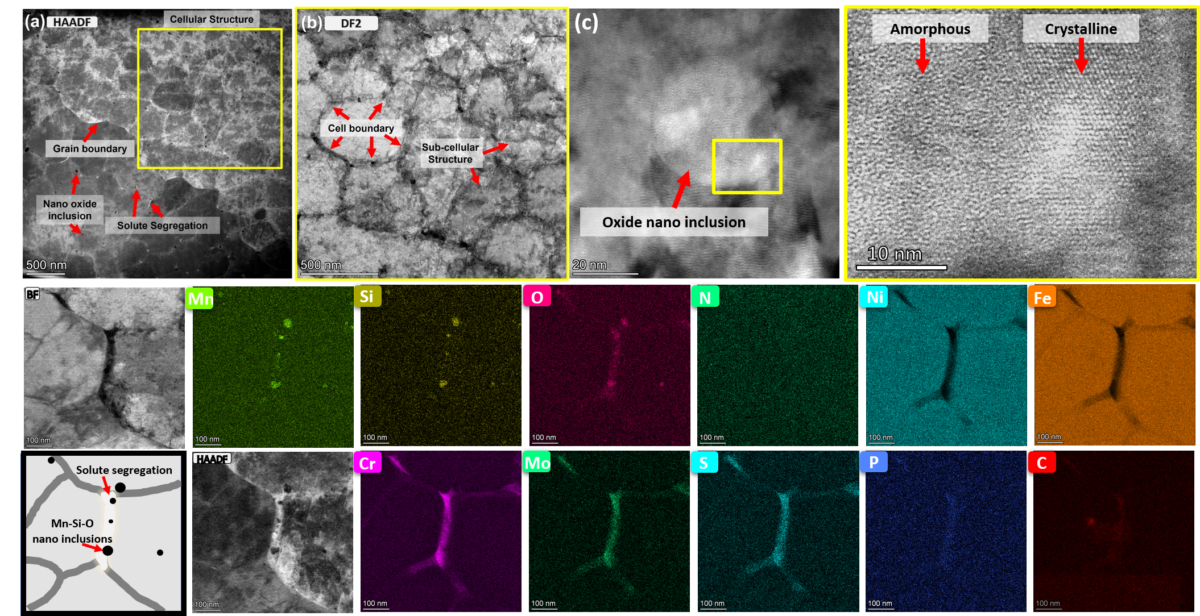
I am Venkata B. Vukkum, a Ph.D. student in the Material Science and Engineering department at North Carolina State University. Currently I am in my third year and working with Dr. Rajeev Gupta. My Ph.D. research is to investigate and enhance the corrosion properties of additively manufactured 316L stainless steel via feedstock modification.
I have a passion for research and teaching, so I want to see myself as a professor and independent researcher at the nation’s best universities. Apart from research, I am a fun person and enjoy socializing, gardening, singing, and sports, particularly badminton.
What instruments are you using for your research and why do you like them?
I have been using different characterization tools like Keyence surface profilometry, Zeiss XRCT, Rigaku XRD, Verios SEM, Hydra SEM – EBSD, Talos TEM, FIB, ToF-SIMS, and XPS. As a part of my research, I investigate, interpret, and compare the corrosion resistance of additively manufactured 316L stainless steel modified via feedstock modification where a specific element (Y, W, CNTs, etc) or compound (CrN, VN, CeO2, BN, etc) is incorporated using ball-milling. Corrosion data alone is insufficient to understand why the corrosion resistance is improved or deteriorated. Here is where visual interpretation is needed, and different characterization tools helped me to study them. For example, using Keyence surface profilometry, XRD, and XRCT, we can identify different phases and manufacturing defects in the specimen caused due to feedstock modification. The electron microscope aided in investing the microstructures where we could see the nanoscale oxide inclusions, dislocations, grain size and orientation, cellular structures, sub-cellular structures, and manufacturing defects. Surface-sensitive techniques like ToF-SIMS and XPS explain the passive film characteristics of the alloys.
What have you been researching and how is it impacting the community?
316L stainless steel alloy is widely used in various applications, from kitchenware to nuclear. Advanced manufacturing technologies like additive manufacturing has been booming due to their simplicity and ability to manufacture complex structure with precision. However, the properties of the printed component are inconsistent due to high solidification rates and heterogeneous microstructure. Corrosion of metallic alloys is inevitable, and globally US$4 trillion is invested in annual financial losses involving corrosion damage and protection.
My preliminary research is understanding and comparing the corrosion phenomena happening in additively manufactured stainless steel to conventional manufactured stainless steel. The main aim of my research is to enhance the corrosion resistance of additively manufactured 316L stainless steel, which was achieved by feedstock modification. By adding the step of feedstock modification, the corrosion resistance was significantly improved, and the next step would be moving this research lab scale to an industrial scale.

“The main aim of my research is to enhance the corrosion resistance of additively manufactured 316L stainless steel, which was achieved by feedstock modification.”
What have you learned from your experience at AIF?
The facilities at AIF are amazing. The well-structured plan and friendly staff helped me to learn and use different characterization techniques.
Best thing about AIF?
Great facilities and friendly, responsible, and knowledgeable staff.
Is there a staff member at AIF that has helped you?
All of the analytical instrumentational facility (AIF) staff members are wonderful. I would especially mention Jenny Forrester, Chuck Mooney, Roberto Garcia, and Toby Tung for helping me to conduct quality research.